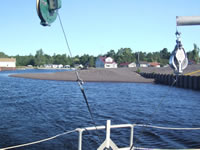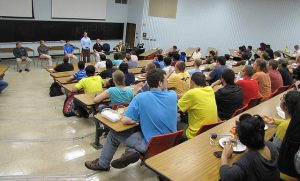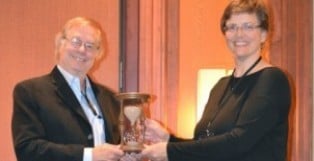 The rocks of the Keweenaw Peninsula are ancient: More than one billion years old, containing loads of native copper deposits. Mining them created a legacy seen throughout the region.
The rocks of the Keweenaw Peninsula are ancient: More than one billion years old, containing loads of native copper deposits. Mining them created a legacy seen throughout the region.
The nation’s first big mining boom certainly left its mark on the peninsula. It left icons like the Quincy Mine Hoist; it left massive deposits of mine waste, a fine material called stamp sands, outside Gay; it left a few problems, like a Superfund site in and around Torch Lake. As rich as the copper that people once mined here, the history of the Keweenaw is full of stories, insight, dilemmas, and opportunities. Call it geoheritage.
As part of ongoing geoheritage education, the annual Geotours are an effort to bring the earth processes and cultural legacy of the land to light. The program is run by Bill Rose, a professor emeritus of geology at Michigan Tech, and Erika Vye, a recent PhD graduate of the geology program. On Thursday, July 28, they took a boatload of people to the eastern side of the peninsula for an up-close and personal view of the Keweenaw’s industrial mining legacy.
Read more at Unscripted: Science and Research, by Allison Mills.

